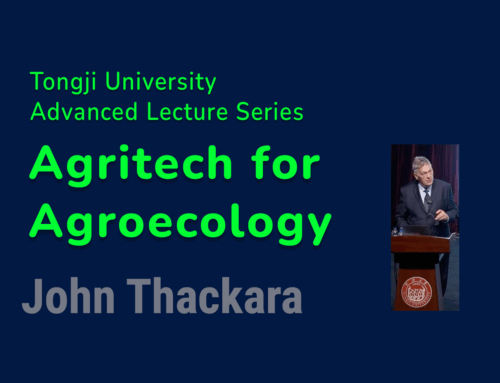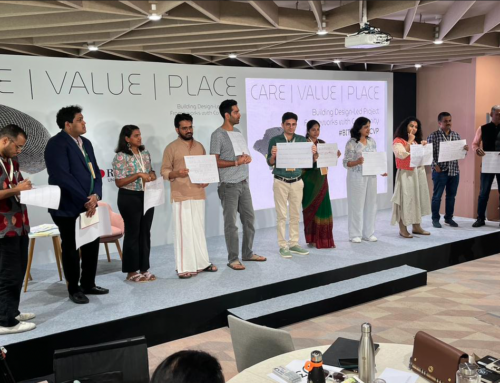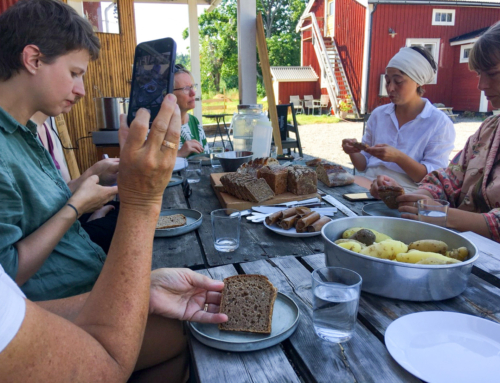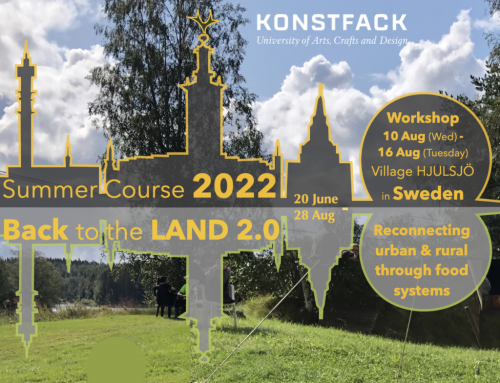In the October issue of Blueprint its editor Vicky Richardson’s accused Designs of the time (Dott 07) of secretly buying 10,000 pounds worth of fruit and vegetables when our Urban Farming project in Middlesbrough “did not generate adequate grub for the guests”. Vicky declined to name the greengrocer for whom Christmas came so early – and I hereby confirm that her charge is ridiculous and untrue. But she did give me the space to publish this reply.
“The biggest problem with the porkies in her (Vicky’s) story is that you can’t eat them. Dott’s Urban Farming project was not an aesthetic game, nor a yuppy lifestyle fad. It was a practical response to the urgent necessity to develop alternative food systems from the ground up.
Standing in Harvey Nichols Food Hall, or wherever it is that Biueprint’s editor shops, food supplies may well look secure. But as I write, there are empty shelves in Caracas, food riots in West Bengal and Mexico, warnings of hunger in Jamaica, Nepal, the Philippines and sub-Saharan Africa. Record world prices for most staple foods have led to 18 percent food price inflation in China, 13 percent in Indonesia and Pakistan, and 10 percent or more in Latin America, Russia and India, according to the UN Food and Agricultural Organisation (FAO). Wheat has doubled in price, maize is nearly 50 percent higher than a year ago, and rice is 20 percent more expensive, says the UN.
Harvey Nicks may look well-stocked now – but at what cost,. and for how much longer? Almost a third more food was flown into Britain last year than in 2005. Air-freight rose 31 per cent in the year to 2006, according to the Department for Environment, Food and Rural Affairs. Food air miles have more than quadrupled – a rise of 379 per cent – since 1992.
The emerging food challenge we face is about energy, not ethics. Today, up to 40 percent of the ecological footprint of a city can be attributed to the systems which keep it fed and watered. On American farms in the early 1800s, the balance between calories expended and calories produced as food was about even. In ‘developed’ countries now it takes ten calories worth of energy from fossil fuels – in the form of fertilizers, pesticides, irrigation, and transportation fuel – to get one calorie back in the form of food.
That insane ratio was sustainable whilst energy, especially oil and natural gas, was cheap. But what about now? Since Dott’s New Urban Farmers fed 2,500 people in Middlesbrough’s Town Meal, the price of crude oil has shot up by $25 a barrel, and there’s a growing consensus that the imminent $100 a barrel energy crunch will not be a blip, but the new norm.
In her attack on Dott’s Urban Farming project, Vicky Richardson writes that “the idea that a modern urbanised society can survive by growing its own food is unrealistic and undesirable”. Undesirable to whom, for goodness sake? The interests most threatened by a re-localisation of food supply are those associated with biotechnology and the agribusiness.
I’m perplexed that Vicky should cite “the spirit of invention and free-thinking” in defence of these corporate interests at a time when many of them are also embarking on radical change. Patrick Cescau, for example, the boss of Unilever, one of the world’s largest food businesses, spoke recently of “ seismic shifts in the world we do business in A reality gap has opened up between where we are and where we know – both instinctively and intellectually – we need to be”.
Global industrial agriculture was less the result of “free-thinking” than of saturating land with fertilizers and pesticides, and soaking it with vast irrigation schemes, using cheap oil and gas to do so. That era is over. Besides, it was an approach based on brute force compared to the innovation required now to re-localise food supply at the level of the city-region.
Real innovation now combines top-down and bottom-up approaches. Middlesbrough Council was deeply impressed by the enthusiasm with which the experiment was taken up at grass roots within the community. Its officers tell me that many residents are asking how they can get involved again next year. But Dott’s project was not about returning Middlesbrough to some kind of pre-industrial Emmerdale Farm. It was inspired by and complements the larger Stockton-Middlesborough Initiative, a 20-year vision for regenerating the urban core of the Tees Valley to ceate a “Green-Blue Heart” for more than 500,000 people.
Middlesbrough is in a global vanguard of city regions – from Arrezzo and Barcelona, to Toronto and the South Bronx, that are beginning to integrate food and water systems into their strategic planning. For these pioneers, food flows and water systems are a new layer of productive infrastructure, not a decorative afterthought.



